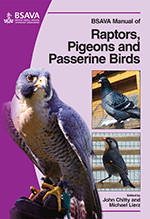
Full text loading...

Examination of the heart, liver, spleen, gastrointestinal system and urogenital system has been described. There are still limitations because of the anatomical peculiarities of birds, but ultrasonography provides unique information for some indications. This chapter considers ultrasonography, computed tomography and magnetic resonance imaging.
Advanced non-invasive imaging techniques, Page 1 of 1
< Previous page | Next page > /docserver/preview/fulltext/10.22233/9781910443101/9781910443101.12-1.gif

Full text loading...












